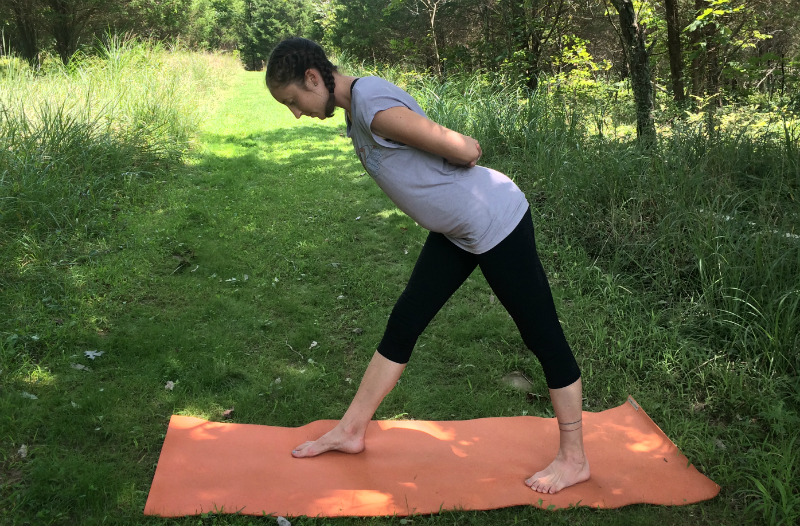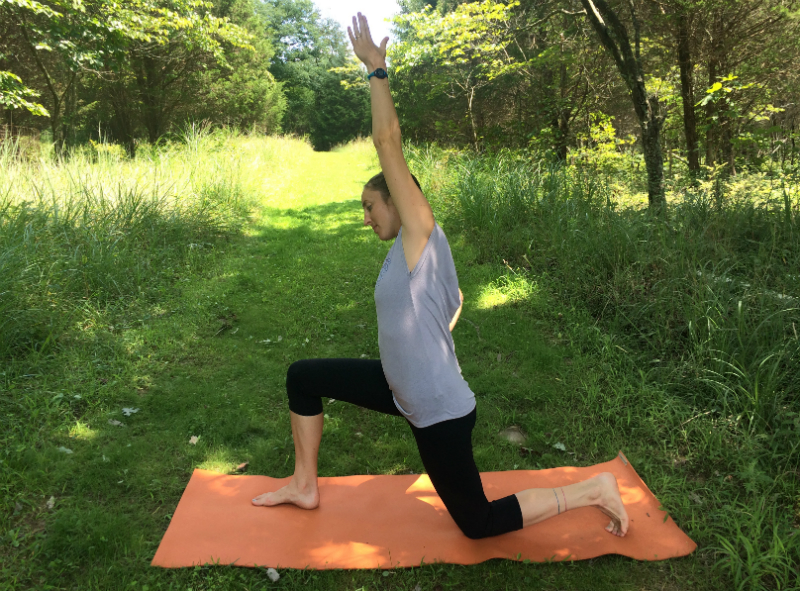
Here’s a little secret that everyone who grows their own fruits and vegetables knows: Gardening is a full-body workout. There’s no need to hit the gym when you can trade biceps curls for hoeing weeds and squat circuits for harvesting watermelon. When you’re hauling compost, putting up fences, digging up potatoes and trellising cucumbers, your body has no choice but to shape up if it wants to keep up. In the end, gardening is good for you, but it comes with its own set of aches and pains. The good news? Adding a post-gardening yoga routine (goat optional) can help alleviate sore muscles after a long day working the field.
Getting Started
A session in the garden is much like a gym workout: A little mindfulness in how you move—and how you care for your body afterward—can go a long way to make you feel strong and limber enough to continue your work throughout the season.
“The best thing is to do a variety of movements in the garden,” says Grace Rogers, a hobby farmer and teacher at the My Old Kentucky OM yoga studio in Frankfort, Kentucky. “Don’t always move the same way. For example, sit on the ground instead of on a bucket because it opens up the hips and is good for the lower body. You can make it into a yoga pose.”
Varying your movements in this way helps avoid repetitive motions, which wear and tear on muscles, causing them to tire out faster and become more prone to injury. A bonus is getting in a good stretch after gardening to offer yourself full-body relief. To do that, Rogers offers a series of seven yoga poses that gardeners—even those who are new to yoga—can easily incorporate into their garden routines.
To get started, find a place on your land where you can stretch and reflect peacefully for 15 to 30 minutes. On a mat or blanket, take a seated position that is different from how you might sit in the garden, Rogers says. For example, if you normally sit on your knees, take a cross-legged position, or if you typically squat, sit with your knees together. Then close your eyes and begin to breathe.
“Think about the work you’ve done and the progress you made in your garden,” Rogers says.
The type of breathing used in yoga is called Ujjayi, or ocean breath. Perform this by breathing in through the nose and opening the throat as much as you can. After taking a few breaths like this, you’re ready to begin the yoga for gardeners sequence.
1. Arm Circles
This yoga pose offers a warmup to loosen the upper body, giving mobility to shoulders, releasing the neck and reversing the rounding of the back that occurs while doing things such as harvesting and weeding.
Start with hands in prayer. Then lock the fingers and hold the palms out, extending the arms in front of the body. Raise the arms overhead, and then release the hands and clasp them at the tailbone and open the heart. If you’re unable to clasp the hands together, face the palms toward each other near the tailbone. Return hands back to prayer.
Repeat this movement three to five times, or as many as feels good to you.
2. Intense Side Stretch (Parsvottanasana)

This pose is great if you’ve been hunched over sowing seeds or weeding, repeatedly squatting to lift heavy boxes of produce or bags of mulch, or generally hanging out with your knees bent, such as you might when hoeing. The pose stretches the hamstrings, back and chest while strengthening the feet and ankles.
Start with your feet a little wider than hip width apart. Step one foot back 2½ to 3 feet with the toes turned out slightly and the feet remaining about hip width. Square up the shoulders and hips toward the direction you are facing, and then interlace the hands by the tailbone or hold opposite elbows with the arms behind the back. Staying square, gently hinge forward, maintaining a straight spine, until you feel a nice stretch in the hamstring. Hold this for a few breaths.
Repeat on the other side. When you do, switch the hand or arm placement so the less dominant hand or arm is on top.
3. Low Lunge

When you’ve been squatting and bending forward in the garden, your hips and side body can tighten up. This subtle stretch helps open up the hip flexor and side body and can improve balance, as well.
Start on the knees with knees hip width apart. Step one foot in front of the body so that the ankle is directly below the knee and the knee forms a right angle. Press the hips forward without moving the knee beyond the foot, and hold for several breaths.
Repeat with the other foot.
4. Threading the Needle

For a good stretch through the shoulders, arms and back to counteract any heavy lifting and repetitive motions in the garden, threading the needle feels great.
Start on hands and knees, with the wrists under the shoulders and the knees under the hips. Lift one arm out to the side, and then thread it under the opposite arm, bringing the outer shoulder and cheek to touch the ground. For a more intense stretch, walk the opposite arm overhead, so the arms form an L-shape. Hold for several breaths.
Repeat on the opposite side.
5. Cobbler’s Pose

Begin in a seated position with feet together, also known as Butterfly Pose. You can put the feet any distance from the body that feels comfortable but where you also get a good stretch. Setting the feet closer to the body will stretch your groin and inner thighs, while placing them farther from the body will give a better stretch in the hips and low back. Try both, or focus on one placement that suits your body’s needs.
Sit up straight in this pose and take a few minutes to massage your feet, paying particular attention to the arches, heels and achilles tendon. This self massage will feel good on tired feet and help to improve circulation.
Next, take your hands to opposite feet, and place your fingers between your toes. This offers a good toe stretch and also helps to improve circulation. Bend forward, rounding the back to release the back of the neck and provide a deeper stretch through the back and hips. Hold for a few breaths, and then sit up and release your feet.
6. Reclined Cobbler’s Pose

Begin in the Cobbler’s Pose as described above, and then lay back so your head and back are on the ground. An alternate way of performing this pose is to lay on a rolled blanket that extends from the tailbone to the head to support the entire spine; this allows a greater opening of the shoulders to reverse the rounding of the back that occurs in the garden. Raise your arms in a diamond shape above your head to stretch out your arms, armpits and side body. Hold for several breaths or as long as feels good.
For gardeners with reduced flexibility or who are pregnant, modify this pose by making a mound of pillows so that you can lay back on an incline.
7. Legs Up the Wall (Viparita Karani)

For this final resting pose, start with your bottom against a wall or tree, and then lay back, sending your legs straight up. This reverses the circulation in your body, which helps with leg fatigue and circulates good blood to your brain and organs. You can do anything with your arms—rest them by your side, stretch them above your head or place your hands on your abdomen.
Enjoy this time to relax, stretch and unwind from your time in the garden. When your body feels good, you can better appreciate all the garden has to offer.




